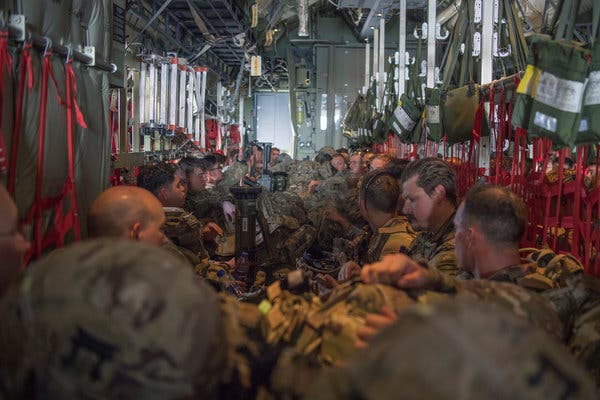
Al Qaeda Branch in Somalia Threatens Americans in East Africa — and Even the U.S. (Published 2020)
Several ominous signs indicate that the Qaeda affiliate, the Shabab, is seeking to expand its lethal mayhem well beyond its home base, and attack Americans wherever it can.
Several ominous signs indicate that the Qaeda affiliate, the Shabab, is seeking to expand its lethal mayhem well beyond its home base, and attack Americans wherever it can — threats that have prompted a recent flurry of American drone strikes in Somalia to snuff out the plotters.
In recent months, two Shabab operatives have been arrested while taking flying lessons — one last summer in the Philippines and another more recently in an African country, intelligence officials say. Those arrests carried eerie echoes of the original Sept. 11 plotters, who trained to fly jetliners. Shabab fighters are seeking to acquire Chinese-made, shoulder-fired antiaircraft missiles, which could pose a deadly new risk to U.S. helicopters and other aircraft in Somalia.
American commanders are hardening defenses at bases in the region after a Shabab attack in January at Manda Bay, Kenya, killed three Americans and revealed serious security vulnerabilities. That attack came about a week after an explosives-laden truck blew up at a busy intersection in Mogadishu, the Somali capital, killing 82 people. The Shabab also claimed responsibility for that attack.
The strike in Kenya came two months after the Shabab released a 52-minute video narrated by the group’s leader, Abu Ubaidah, in which he called for attacks against Americans wherever they are, saying the American public is a legitimate target. The statement mirrored Osama bin Laden’s declaration of war against the United States in 1996.
“Shabab is a very real threat to Somalia, the region, the international community and even the U.S. homeland,” Gen. Stephen J. Townsend, the head of the military’s Africa Command, told a House committee in Washington this month.
The Shabab control large parts of Somalia and raise considerable funds through local taxation and extortion. Despite intensified American airstrikes and a long-running offensive against the African Union, the group has carried out deadly attacks not only in Somalia but also in neighboring Kenya and Uganda.

Last year, an explosives-laden truck blew up at a busy intersection in Mogadishu, the Somali capital, killing 82 people.
American and other Western intelligence analysts and Special Operations officers express fears that Shabab militants could threaten the 3,500 personnel at the Pentagon’s largest permanent base on the continent, in Djibouti, as well as international shipping in the critical Bab al Mandab waterway off the southern Yemeni coast.
And last month, the United States Embassy in Nairobi warned of a possible terrorist attack against a major hotel in the Kenyan capital that is popular with tourists and business travelers. The warning did not specifically mention the Shabab, but intelligence officials said the threat bore the hallmarks of such an operation.
The Defense Intelligence Agency told the Pentagon’s inspector general in a recent report that the chances of the Shabab attacking the United States remained relatively low, but the analysts noted that the group had made clear its intentions to kill Americans at any location.
One threat could be home grown, from radicalized Somali-Americans living in cities like Minneapolis or Columbus, Ohio, which have large Somali-American communities, analysts said. Another could be from Shabab militants in East Africa, who have pilot training and might be able to slip into the United States — a much more difficult feat now than when the original Sept. 11 plotters entered the country in 2001.
For now, Shabab threats against Americans remain highest in East Africa.
In September, a suicide bomber detonated a car packed with explosives at the gate of a military airfield in Bale Dogle, Somalia, injuring one American service member. Afterward, according to the Pentagon’s inspector general report, the Shabab and other Qaeda-related groups released near-simultaneous messages on social media, suggesting a coordinated media strategy among the Qaeda branches.
“This is what we struggle with,” Brig. Gen. Dagvin R.M. Anderson, the commander of American Special Operations forces in Africa, said in an interview last month on the sidelines of a counterterrorism exercise in Mauritania. “Their intent is clearly stated. The question is, are they able to develop a safe haven to plan, fund and plot these attacks against the U.S.? What’s their timeline? How do we and our partners keep them off balance?”
It is unclear how the Shabab might try to exploit the spread of the coronavirus pandemic on the continent, where many countries face huge challenges responding to the crisis, General Anderson said on Friday in a separate telephone interview from his headquarters in Germany.
There are also now about 500 American troops in Somalia. Most are Special Operations forces stationed at a small number of bases across the country. Their missions include training and advising Somali army and counterterrorism troops and conducting kill-or-capture raids of their own.



